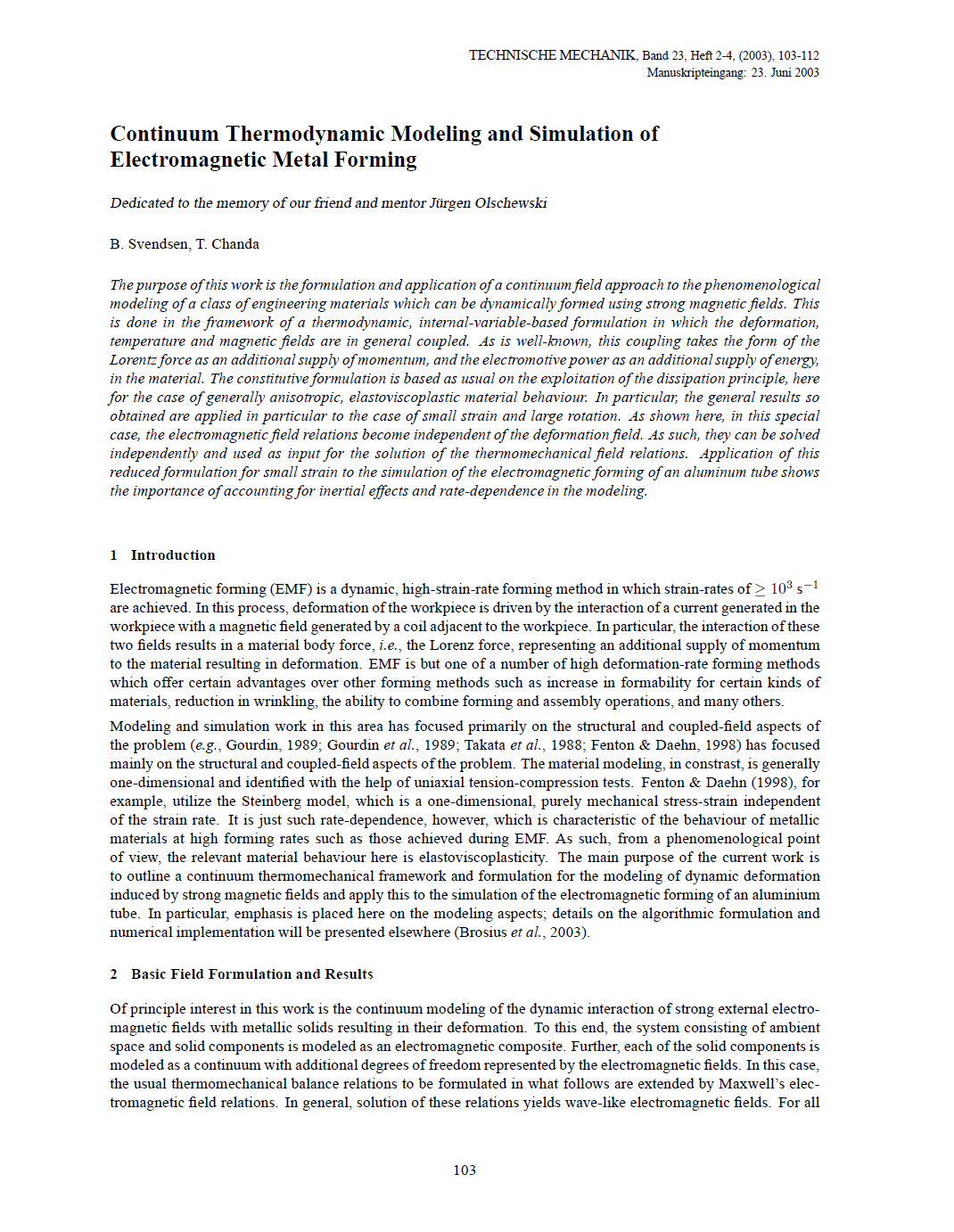Continuum Thermodynamic Modeling and Simulation of Electromagnetic Metal Forming
Abstract
The purpose of this work is the formulation and application of a continuum field approach to the phenomenological modeling of a class of engineering materials which can be dynamically formed using strong magnetic fields. This is done in the framework of a thermodynamic, internal-variable-based formulation in which the deformation, temperature and magnetic fields are in general coupled. As is well-known, this coupling takes the form of the Lorentz force as an additional supply of momentum, and the electromotive power as an additional supply of energy, in the material. The constitutive formulation is based as usual on the exploitation of the dissipation principle, here for the case of generally anisotropic, elastoviscoplastic material behaviour. In particular, the general results so obtained are applied in particular to the case of small strain and large rotation. As shown here, in this special case, the electromagnetic field relations become independent of the deformation field. As such, they can be solved independently and used as input for the solution of the thermomechanical field relations. Application of this reduced formulation for small strain to the simulation of the electromagnetic forming of an aluminum tube shows the importance of accounting for inertial effects and rate-dependence in the modeling.





